Dec Number 0
nº 0
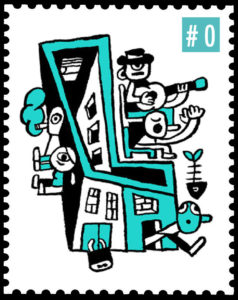
Cover:
Panorama of El Cabanyal.
TAÑO
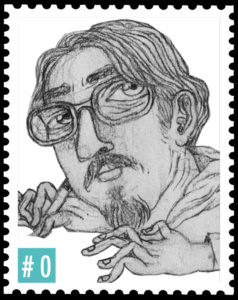
Elías Taño, author of the cover, was born in the Canary Islands and lives in Valencia.
He draws people of undefined personality, who are always in group, to represent political concepts.
He tries to resemble his characters, saying that in his work he has no time to reflect and he just executes. But he fails in this attempt because he needs to surround himself with people to talk, to discuss, to blaspheme, to draw… and that is, indeed, pure reflection. Otherwise, how do you explain that he goes around saying that “he’d like to generate critical thinking throughout an international and rebellious art”? Mm?
His thinking process includes a notebook size A5, where he accumulates miniature images that he enlarges later searching for some kind of graphic of the mistake. Since he is unstoppable, he paints an urban wall as if it was a piece of paper.
He surely has the same attitude when he confronts life.
This is his web.
Stamp: ©Carla Protozoo
SOTO
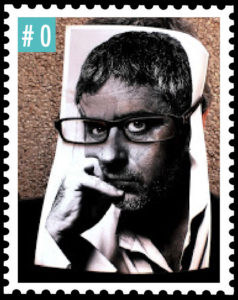
Antonio Soto, author of Marítim, was born and lives in Valencia.
He thinks that only a jerk could coin the phrase “Live each minute as if it was your last”, because life is made of avid instants of curiosity, long pauses of reflection and others moments of lethargy.
This teacher of art history, ex gallery director and ex restorer, is a man with no apparent contradictions. He likes magic but he doesn’t like tricks, he likes to sleep but he doesn’t like the anesthesia.
As a matter of fact, he wrote a list entitled The 55 things I like, which is a perfect guide to know him better. This is a fragment:
“To dive in the junk – Stopped clocks – When the cicadas shut up – The eyes of giant squids – The dubbing of the mod in the catastrophe’s movies (“Oh, my god, we will all die!”) – To sing with a deep pitch in a quartet of duduá – To practice the Heimlich maneuver to my mother – To discover figures in my poo – Stranded boats – To find and collect pictures of unknown people – The manometers at zero… ”
He also wrote The 55 things I don’t like but -fun fact- the things he hates are less interesting.
This is his web.
Stamp: ©Antonio Soto Jr.
DEIMA
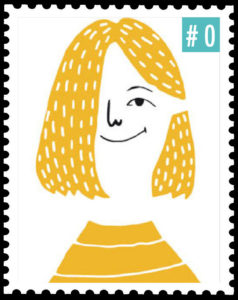
Deimante Jonusaityte, the illustrator of Marítim, is Lithuanian and lives between València and Ràfol de Salem.
She is so young that her biography can be told “in a jiffy”, just like one of Mafalda’s friends said. Deima and her illustrations are direct and self-made, so she can perfectly draw muscular women in bathing suits or hairy guys living their way.
In her short career, we can find posters that promote the right to know of the citizens or a version of the Kama-Sutra in the form of an illustrated alphabet. And this has only just started.
This is her web.
Stamp: ©Deima
ALADRETA
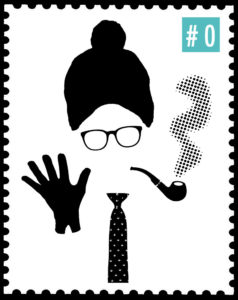
Alfons Aladreta, author of Canned mermaid, was born in Valencia but we don’t know where he lives.
He likes to remain unnoticed to be able to sneak in and peek. Then he writes about what he sees and publishes it in fanzines and flyers that are only read by his friends. From those publications we can highlight And the ship goes on, an excursion among abandoned industrial warehouses, He wouldn’t do it, a trip among abandoned chalets, and Imperfect obituaries, a series of obituaries dedicated to persons who are still alive.
No one knows what he does for a living. When someone ask him about his job, he says that he does book layouts, but that he always signs under different pseudonyms, one for each client. However, he insisted to show his real name in this collaboration for The Valencianer.
He doesn’t have any web nor profile in social media, as far as we know.
Stamp: ©Alfons Aladreta
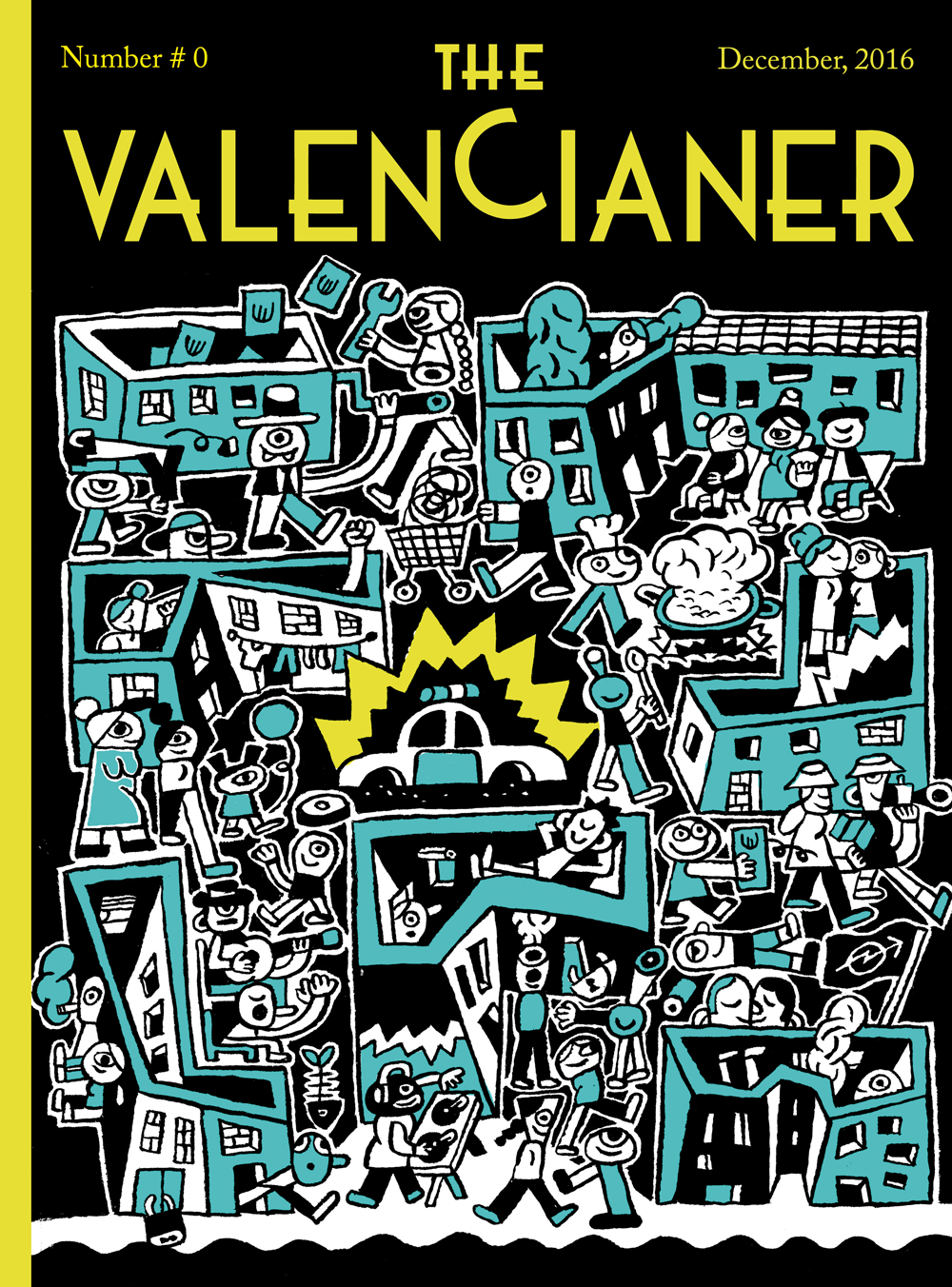
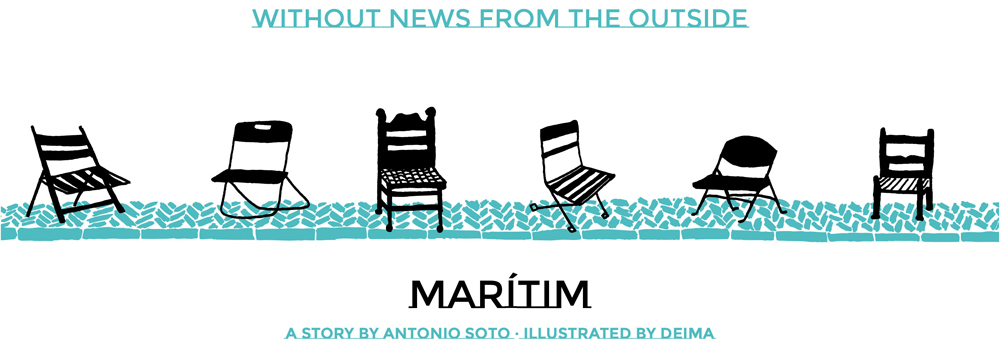
Everyday I travel by metro. The last stop of the road is called Marítim, where my neighborhood is located. Further than that there is the sea, but the train is, unfortunately, not amphibious.
Back from work I look at my travel companions. Stop after stop, the passengers arrive to their destinations and the wagons get empty slowly. I don’t know why but to me this always seems to resemble natural selection, where the last stop, in my neighborhood, will gather the best qualified specimens. Not really.
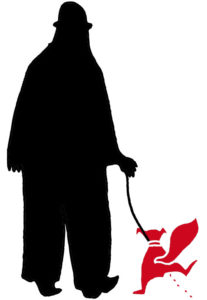
My father and my uncle -my godfather- were born across the atarazanas, in a two-storey house that was demolished years later because of the damage caused by the bombs of the rebels. The port was a strategic area where the bombs were dropped every day. My father hardly keeps any memories from the neighborhood because the family moved to La Punta when he was very small. It was a safer place. My uncle, my father’s older brother, remembers the stones that were put in the concrete to reinforce one of the lateral buttress of the atarazanas. He remembers how he climbed the buttress and polished it with his butt while sliding to the sidewalk, like in a toboggan. My grandmother, a dressmaker, scolded him because of the holes in the seat of his pants, but with a needle and a lot of patience she stitched the clothing and mended the pants. The toboggan, still there, is just a small slope where the dogs like to pee.
Today is saturday. I woke up early and all my sins have been forgiven. I take some prescribed pills and white coffee for breakfast. I make my bed and watch a neat movie on TV. It is a glorious day of sun without heat. After taking a shower I go down to the hairdresser. I’d never go to the hairdresser having my hair dirty. I say hi to Santiago, the hairdresser: How are you?, I ask him. Better than ever! Life smiles at me! It is sunny, I love my job and my family. What else do I need?, he said. Santiago is an awesome guy. I left the hairdresser with a lighter head and full of optimism.
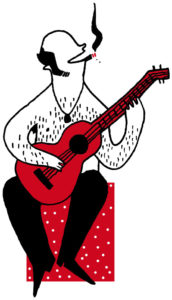
Later, I go for a walk with the shittydog, my lovely pet, that is behaving unusually good. My neighbors greet me in slow motion. The kids at the park avoid to bombard me with their balls. The drivers respect the zebra crossing. The old men stay quietly sit in the bench without bothering anyone. And there is no police in sight.
At this point, I start to check the balconies, checking there are not any pots ready to fall on my head. This is very weird! But all my suspicions are false and I get back home without any incidents. Further more, the octopus with potatoes that I cooked tastes delicious. So weird! So so weird! I’d better read for a while and take a nap, hoping that nothing breaks through.
When I wake up, I prepare tea and peep through the kitchen window. A seagull scares away the doves that nest in the cornice of the factory and eats their nests. What a bitch! But it’s a great show to see, like a National Geographic episode.
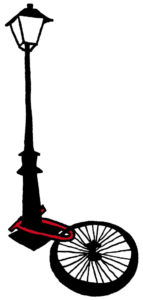
With any luck, a procession will pass by the street. In this neighborhood, there’re plenty of religious brotherhoods that walk with their paces, accompanied by music bands. I enjoy this paraphernalia rather a lot, although I haven’t seen yet that any member of the brotherhood takes a shotgun out in the custom of killing a rival family capo. But I don’t lose hope that this might happen someday, and I follow with secular interest every little Salome who takes in their small hands the cut head of the Bautista. I follow every Santa Lucía who carries her sliced eyes on a silver tray.
Ahead of me I have a lazy Saturday afternoon and a Sunday of crosswords on pyjamas. I purr.
My neighborhood is the sea and the port, a little girl that pees hidden between two cars, an impossible dusk, the dumb guy from the street La Reina, the black cat eating the granny’s cookies at the plot, the modest modernism, the gypsies of open doors and tuneless moans, the cinematographic boxing, the stolen bike, a Russian soprano on a rented balcony, a crushed rat, the soiled furniture abandoned beside the trash, the bar of the lupin beans, the swifts flying low between the ruined boats and racing cars, the neighbours enjoying the fresh air, and yes, some dumbass.
Oh well, I can’t complain…
When I die, if I was a good guy, I will live in a heavenly replica of the Marítim. It will be the same place but with the smell of holiness, which is, as we all know, the smell of the ones that pee cologne.
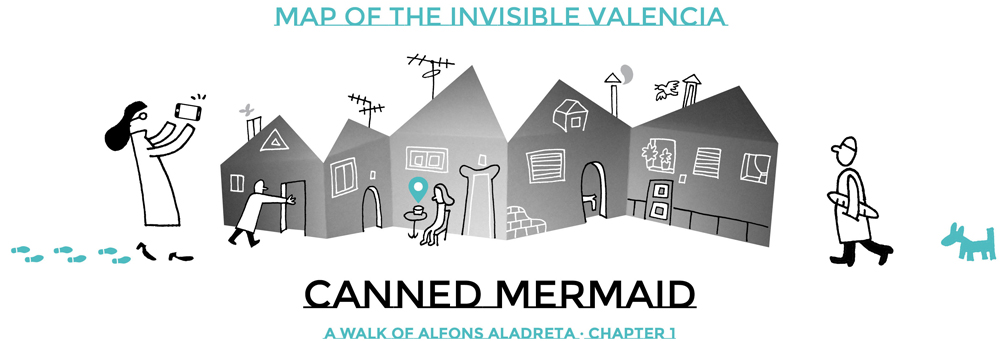
During their trips, a lot of travelers look for special objects, local “things” to keep as souvenirs from the place they visit.
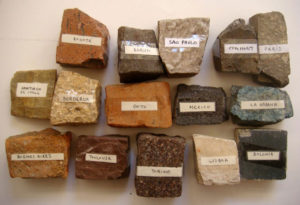
©Isidro Ferrer
For example, my ophthalmologist always returns home with figures of owls (so original) in his suitcase.
The illustrator Isidro Ferrer collects a stone in every city he visits. Not any stone but one that was part of a building or an avenue.
The author of this article, doing a wicked association of ideas, always buy a white notebook in every city he goes to. And on the clean pages he visualizes what we remembers from that place.
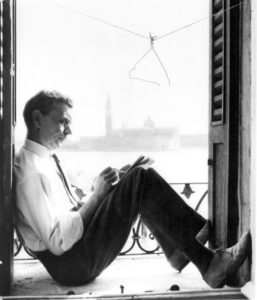
Sasek à la Willie Gillis
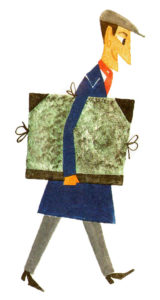 Miroslav Sasek, czech writer and drawer, made in 1958 an illustrated guide book entitled This is Paris, initially addressed to children. While he portrayed the big monuments of the city, he focused in the flea markets, the street artists, the workers at the markets, the passengers getting in and out from the metro, the atmosphere of the cafe-tabac bars… in short, all the things that happen there and make a chronicle of that moment. From then on, he illustrated 17 other places: London, Rome, San Francisco… doing what I think is the best job in the world: to travel to various cities, taste them, wander around and draw them. Sasek never came to Valencia. Sometimes I’ve imagined how it would be the This is Valencia guide.
Miroslav Sasek, czech writer and drawer, made in 1958 an illustrated guide book entitled This is Paris, initially addressed to children. While he portrayed the big monuments of the city, he focused in the flea markets, the street artists, the workers at the markets, the passengers getting in and out from the metro, the atmosphere of the cafe-tabac bars… in short, all the things that happen there and make a chronicle of that moment. From then on, he illustrated 17 other places: London, Rome, San Francisco… doing what I think is the best job in the world: to travel to various cities, taste them, wander around and draw them. Sasek never came to Valencia. Sometimes I’ve imagined how it would be the This is Valencia guide.

©Robinson
Around the same period of time, a german illustrator who signed as Robinson, assured that he had X-ray vision, and thanks to this privileged sight he was able to draw two impressive books (Paris, line by line and New York, line by line), going through the shell of the cliché and getting close to the smallest details that make the reader want to be there. There is neither a Valencia, line by line book.
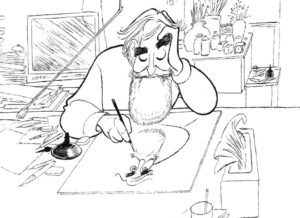
©Al Hirschfeld
Al Hirschfeld, the almost centenarian american cartoonist, portrayed New York through the actors, musicians, directors, critics and theaters of Broadway. Saül Steimberg, the Rumanian-New Yorker master and magician of the line, imagined that city as a huge container of people increasing their limits in a famous cover for The New Yorker where, looking to the west from an apartment in the Ninth Avenue, he draws a fabulous panorama that reaches China.
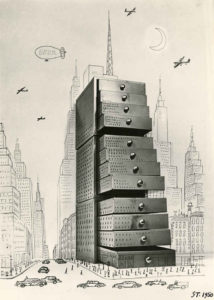
©Saül Steimberg
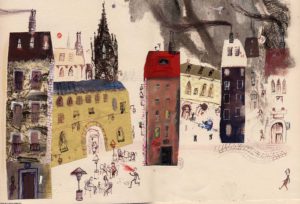
©Javier Zabala
Javier Zabala, renowned illustrator from León, Spain, has two delicious small books with fold-out pages where he cleverly captured Madrid and Barcelona, in a way that those cities are only recognizable for competents and avids eyes. The french François Avril never gets tired of drawing incredible maps of Paris, New York and Tokio. Media Vaca, the exceptional publishing house from Valencia, edits a collection of books named My beautiful city, asking to creatives (always native or residents) to portray the city they inhabit, highlighting the aspects they prefer and not necessarily the most commons. Here, between Tokio, Zaragoza, Milan, Warsaw and Oaxaca, we finally find Valencia (number 3 in the collection).
The Valencianer, in turn, searches for the tracks left in the streets by those people who have the need to portray the city of Valencia, the need to perpetuate with their drawings the things they love or hate, or the things that could disappear anytime. We want to trace a map with the visions of those who transform Valencia into images and offer them to anyone who pass by.

©Calpurnio
We find incredible that these things are invisible for most of the people, so we’ll trace that map of the invisible Valencia with all the things or publications that we find during our walk through the city. And we’ll take these things as souvenirs.
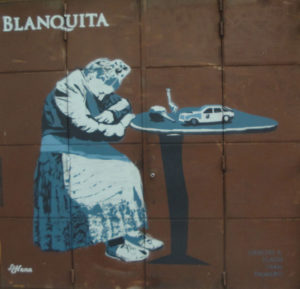
©La Nena
The first day of my walk, after some strolls in Ciutat Vella, I find the Café Negrito in the square of the same name, and the Bar Negrita… and my sight doesn’t fool me: both signs are drawn by Calpurnio Pisón, a multitasken and brilliant artist from Aragón settled in Valencia. Nearby, there’s a metal shutter intervened by the urban artists La Nena, with an image of Blanquita, a classic character from the underclass Valencia, as I am told by a friendly woman that passed by with her shopping cart. I capture the evidence and, excited for the discoveries, I keep walking to the south, in the street Purísima. Soon I stumble upon a small shop that displays an image of a canned mermaid (product of Valencia) printed on a T-shirt. This shop is called El Mirlo, and it advertises, among other things, the sale of “souvenieres”, so I decide to check the place. It is a minimum store with a comfortable space -I guess- for four persons. Working behind an iMac there’s a tall and bearded guy who greets me with cuban accent. I check the showcase and I find drawings of extraordinary quality: violinists cutting ham, Duchamp’s bike, some invisible dogs, the “this is not a coffee with milk” of Magritte, and thousands more.
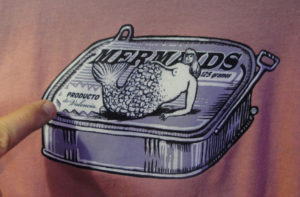
©Carlos Michel Fuentes
–Where are the “souvenieres”? –I ask.
Then Carlos Michel Fuentes, the guy of the iMac, shows me a T-shirt of the Eiffel tower surrounded by fog and with the word “London”.
–I mean, where are the souvenirs from Valencia? This would be a souvenir from Paris or London, or from a disturbed mental state – I say jokingly.
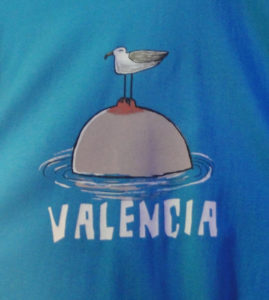
©Carlos Michel Fuentes
–This shop is visited by many french and english tourists, and they love it. In fact, this other drawing is a bestseller –then he shows me a print of a vagabond rummaging in the trash while carrying the famous Eiffel tower in his cart. –If I only sell images from Valencia, I’d be ruined.
In the end he shows me various T-shirts “Souvenir from Valencia”: live paellas, glasses with crystals in the shape of breasts… I realize that the meaning of “souvenieres” may be something like “psychological memories”.
–In this store people enter and inspect the drawings with the same caution of a police recognition –says the owner noticing my perplexity. –Not this one, neither that one, hmmm, this one! I take this one! –he laughes.
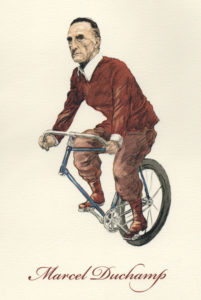
©Carlos Michel Fuentes
I realize that Carlos Michel is, in fact, the author of all the images.
–How can an illustrator put a shop where he sells his own illustrations, which don’t seem to have a clear commercial purpose such as the sale of souvenirs or something similar? –I ask again.
–I wouldn’t be able to do anything else. Besides, there is, indeed, a commercial purpose. I was tired of offering my work to others, tired of walking in desert industrial suburbs with the wind slapping my face.
Instead of going out, I prefer to receive the clients in my shop, to chat, to get an assignment and voilà. It’s great!
In my very first day of exploration I’ve found a one of a kind guy. I say goodbye and tell him I should run to take a coffee in a bar while I write all the things he has told me.
–Great! Come back anytime, ask me the same questions and I’ll answer other things. Different things.
(CONTINUARÁ…)



Sorry, the comment form is closed at this time.